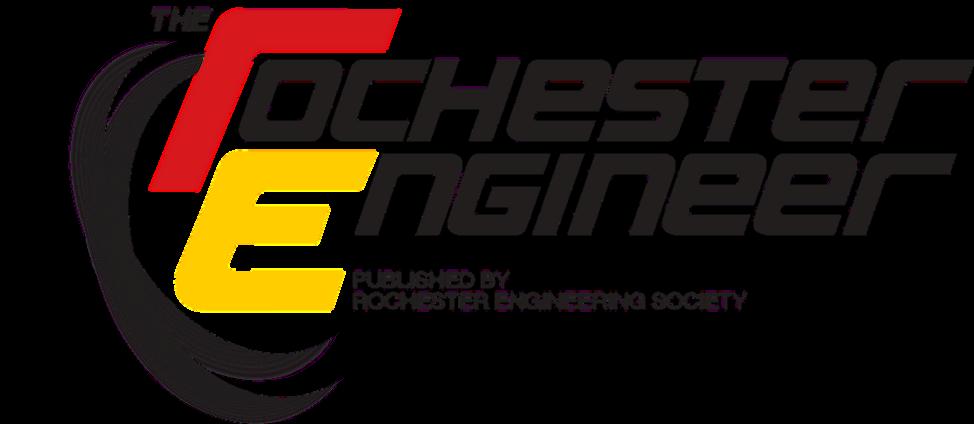
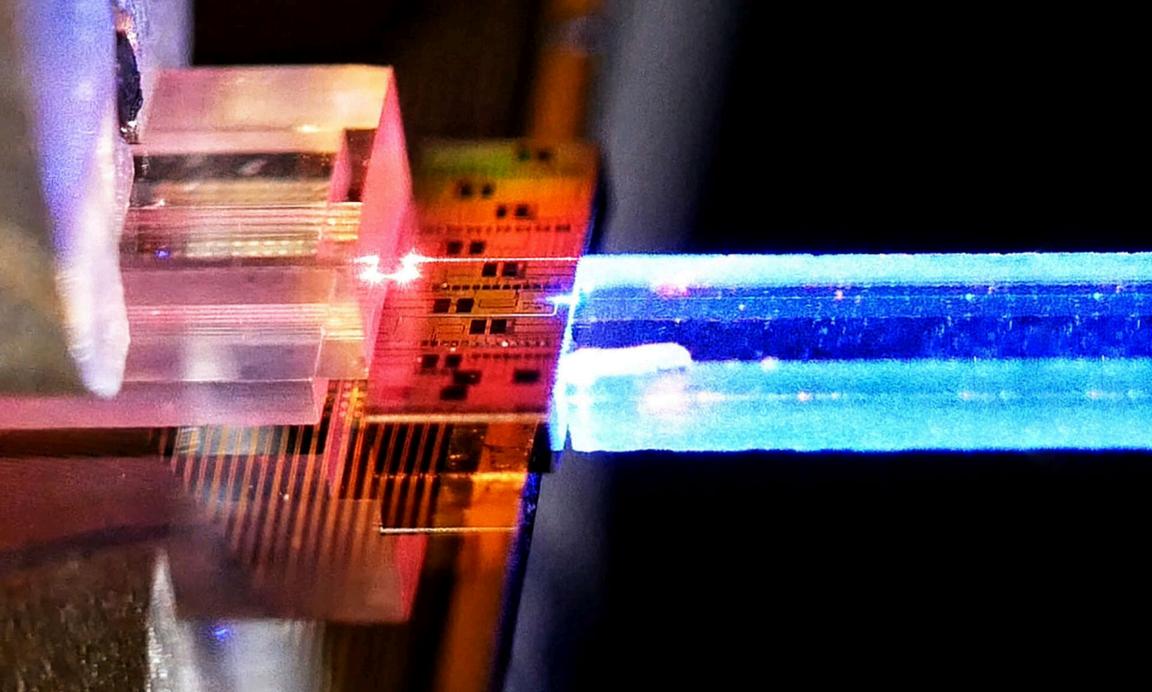

ENTERPRISE LEVEL
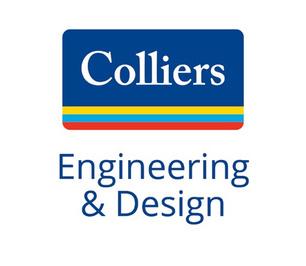
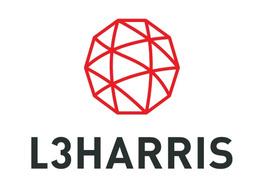

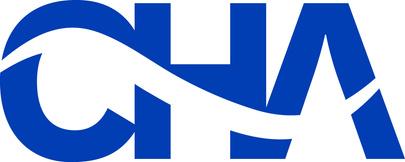

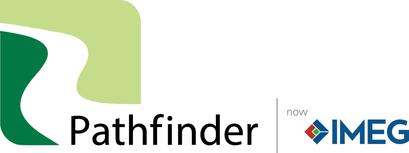


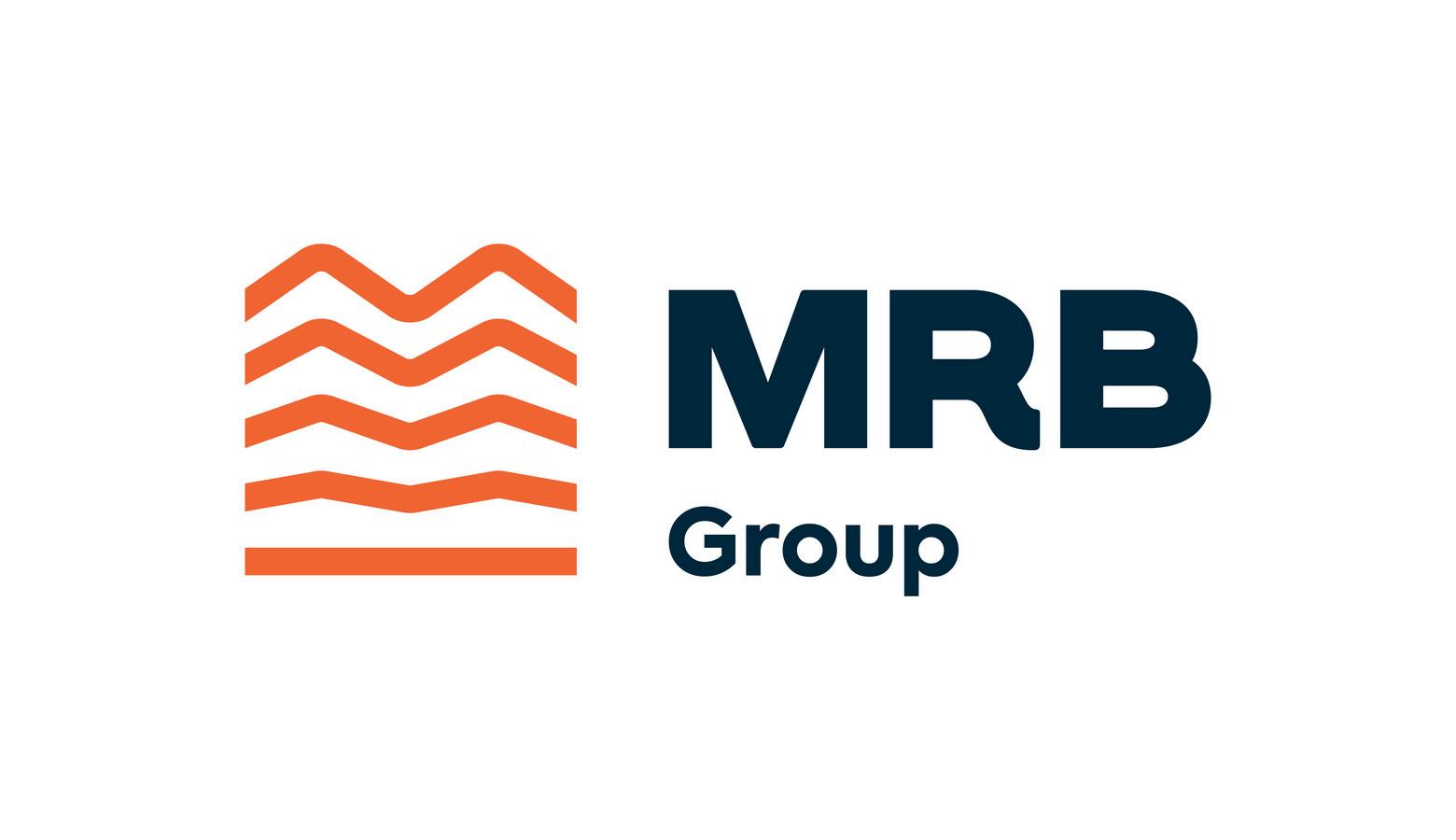

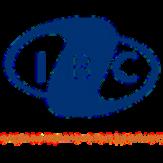








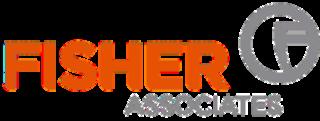

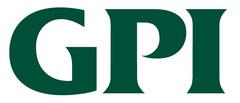



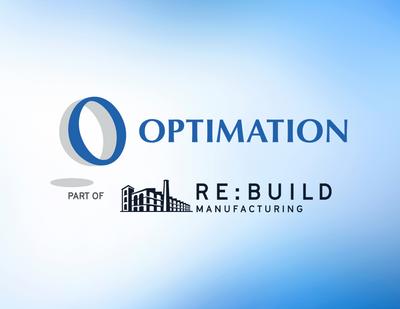


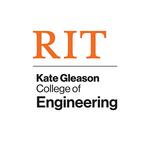


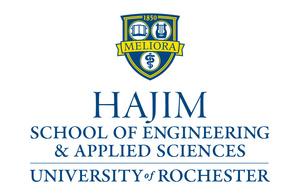






































RES Mission Statement:

The RES will become the lead organization for improving the image and influence of the engineering community in the greater Rochester area by: Demonstrating a comprehensive knowledge of the region’s engineering and technical capabilities; Providing the best clerical support and public relations assistance to our affiliates; Continually communicating the engineering and technical accomplishments to both the engineering and technical community and the public; Providing regular forums and networking opportunities for the exchange of ideas and discussion of issues; and, Providing programs that identify career opportunities to the region’s youth and develop the skills of the practicing engineer.
The deadline is the 10th day of the month prior to the issue Unless otherwise stated, opinions expressed in this publication are those of contributors, not of the Rochester Society, Inc.
Advertising information may be obtained by contacting the office of the Rochester Engineering Society or going to the website at www.roceng.org.
Published quarterly, four issues electronically. You can purchase individual copies directly from ISSUU. 2,500+ quarterly circulation (4 issues electronically) ISSN 0035-7405
Go to www.roceng.org to join the Rochester Engineering Society. Click on the individual membership and you can submit your application on-line
News items and articles are invited.
Materials should be submitted to e-mail: therochesterengineer@gmail.com www.roceng.org.
Stay up to date with the Rochester Engineering Society & their affiliates events by going to: https://roceng.org/Calendar

Campus News UofR: New method to study catalysts could lead to better batteries
Campus News UofR: Four transdisciplinary teams awarded multi-year funding Campus News UofR: New laser smaller than a penny can measure objects at ultrafast rates
RIT: COSMOS-Web opens window into universe for scientists and citizens








President
DENNIS ROOTE, PE
CDE Engineering & Environment, PLLC
dennis.roote@cde-pllc.com
Treasurer / Imm. Past President
MICHELLE SOMMERMAN, PE
Colliers Engineering
Michelle.Sommerman@collierseng.com
HOWARD RESSEL, PE
Popli Design Group (retired NYSATE) ressel@frontiernet.net
MIKE KURDZIEL, PhD
L3Harris Corporation
mike.kurdziel@L3harris.com
BRETT ELIASZ, PE
Colliers Engineering
Brett.Eliasz@collierseng.com
KENTON G HINES
Merrill Lynch
Kenton Hines@ml com
TRACEY KARATAS, PE
Senior Engineer, Environmental Resources Management (ERM)
JESSIE COCQUYT
Administrative Director
Builders Exchange of Rochester
res@frontiernet.net







First Vice President
DAWN LaPIETRA L3Harris Corporation
dawnlapietra@gmail.com
Second Vice President
Kelly Robinson, PE, PhD Founder, Electrostatic Answers
kelly.robinson@electrostatic answers.com
STEVEN W DAY, PhD Rochester Institute of Technology swdeme@rit.edu
NOAH KELLY NAM Products Services Manager, Alstom noah.kelly@alstomgroup.com
JESSICA SHANG, PHD
Associate Professor, University of Rochester j.k.shang@rochester.edu
RICK CHURCH, PE
Electrical Engineer, L3Harris Space & Airborne Systems
SHEILA RANSBOTTOM, PE
Senior Transportation Engineer, Wendel sransbottom@wendelcompanies.com

Roll out those lazy, hazy, crazy days of summer
Those days of soda and pretzels and beer
Roll out those lazy, hazy, crazy days of summer
You'll wish that summer could always be here
Hans Carste, 1962
Popularized by Nat King Cole, 1963
Summer. July, actually. How is your (our) summer coming along? What are you doing? Many of our affiliates are taking a well-earned break. Many of you are out and about in different locations throughout the country, visiting family/friends, sightseeing, and otherwise enjoying time off RES, with our new Board of Directors in place, is taking the time to begin looking at our upcoming program year. What will that look like?
To start with, a change – we do no not normally publish a magazine in July – but we are publishing quarterly, so here it is.
The school year, though just finished, is about 7 weeks out – the tutoring programs that RES has vetted are looking for tutors to begin the new year.Please see Lee Loomis’ article.
We have some new programs in the concept stage that will provide engagement to young engineers and potential engineers.
This months magazine is rather thin. In fact, our newsletters are also getting thin. The Rochester Engineering Society is an umbrella organization, serving and connecting engineering employers, technical societies, and engineers though our corporate, affiliate, and individual memberships. Our overreaching goal is to advocate, connect, and enhance the engineering community – and our principle means of doing so is through communication. We need to hear from you. We want to hear what your company is doing, what research your institution is conducting, what products/projects/programs are under design or development We want to hear what plans and programs your technical society has in the works for the coming year – let us help you get the word out! We want to hear what you, the individual engineer, is doing. We have a member’s spotlight for this purpose.If you are interested, contact the RES office and let them know and they will get you in touch with the appropriate people Don’t think of it as “blowing you own horn” – it provides insight into what our community looks like.
There are over 9,000 engineers in the Rochester area – help us help you to get to know them
As always, if you have any questions or concerns, email me at dennis.roote@cde-pllc.com give me a call at (585) 330-6986.
Thanks again.
Dennis R Roote, PE President, Rochester Engineering Society



With the June 2024 closing of Dr. Walter Cooper Academy (RCSD School #10), the RES has identified three, RCSD K-6 elementary school, in-person, daytime tutoring programs we believe to be compatible with the interests and historic availability of our RES Tutors. The leaders of these programs have shared how they recruit and vet tutors, the academic focus, supervision and parameters of their tutoring programs, and if they would allow “teams” of RES Tutors to alternate their weekly tutoring assignments Links to each of these programs are provided:
“Help Me Read” - RCSD School #17, 158 Orchard St, Rochester, NY 14611 – Dr David Singleton - Director, Ms. Linda Maulding - Coordinator/Supervisor. School Office: (585) 225-4200. Founded in 2007, this is a program with its own on-site Coordinator, separate office and academic materials storage area. The curriculum support, from the School’s Teacher and Administrators, has been attracting tutors from all around Rochester’s neighborhoods and business community, for almost 20 years. Access information on their program and a tutoring application at: hmrcolc@yahoo.com, “Help Me Read”
Coordinator/Supervisor’s phone: (585) 766-8440.
UPDATE…Several RES “veteran” Tutors have begun working with the “Help Me Read” program (HMR), this past Spring, and have expressed interest in continuing this Fall. The next HMR orientation meeting is scheduled for 8/04 (Monday) 10:00 - 11:30AM, 8/20 (Wednesday) 9:00 - 10:30AM, 8/25 (Monday) 9:00 - 10:30AM. Please reach out to Ms Linda @ hmrcolc@yahoo.com for more information.
“TRU Impact – Rochester” - RCSD School #16, 321 Post Ave, Rochester, NY 14619 –Victor Norflee – Director. Founded in 2020, this is an established program, led by an experienced RCSD High School Coach and his team, and guided by the School Principal and Community School Site Coordinator It offers in-person school-day, after school and virtual tutoring. Curriculum includes basic reading, math, science and social studies. Access information on their program and a tutoring application at: www truimpactroc org, then go to “contact” page Inquiries will receive an immediate response from the Director
UPDATE: We look forward to hearing that other RES ”veteran” Tutors have expressed interest, and become involved in TRU-Impact Rochester’s tutoring program
“Renaissance Academy Charter School of the Arts” - RCSD Charter School (RENACAD), 299 Kirk Rd, Rochester, NY 14612 – Dr Caitlin Loury - Chief Education Officer, Ms. Kilolo Moyo-White – Family Services Coordinator. School Office: (585) 2254200. Established in 2014, over 90% of the students of this RCSD Charter School reside in the City of Rochester. The additional “arts-focus” in the curriculum of this 500+ student school provides experiences designed to awaken not only the academic, but also the dancing, artistic and musical spirit, in their learners. Access information on their program, and then a tutoring application at: www.renacad.org, https://forms.gle/WqCnkmhjy15yVUHD9
UPDATE: We look forward to hearing that other RES ”veteran” Tutors have expressed interest, and become involved in RENACAD’s tutoring program.
We continue to reach out to as many of our “veteran” RES Tutors as possible, informing them about these new options, and to inviting them to consider volunteering their considerable skills, as experienced tutors, in continued support for RCSD students.

Tracey Karatas holds a B.S. degree in Chemical Engineering from Lafayette College, Easton, Pennsylvania. Following college, Tracey joined Eastman Kodak Company as a product development engineer working to bring new black & white professional photographic papers to market. Following eight years in R&D, she worked for an additional 25 years in the company’s corporate health, safety and environmental department. In this role, she was responsible for implementing multi-media environmental compliance programs in one of the company’s largest manufacturing divisions, as well as managing a group of approximately ten professionals responsible for completing multi-media reports and permit applications on behalf of the Kodak facilities in Rochester. During this period, Tracey also gained expertise in air regulations, Title V air permitting, as well as greenhouse gas inventories and reporting.
In 2014, Tracey joined ERM, the world’s largest advisory firm on sustainability (with consulting services in all environmental matters). In her role as a Technical Consulting Director, she assists clients with Title V and State Facility air permit modifications and renewals, Prevention of Significant Deterioration (PSD)/New Source Review (NSR) applications, Reasonable Available Technology (RACT) and Best Available Technology (BACT) assessments, Federal/State air regulatory compliance evaluations, reporting obligations, emissions inventories, and New York State air toxics modeling and compliance evaluations under 6 NYCRR Part 212, environmental audits, as well as evaluations necessary to address the requirements of New York’s Climate Leadership and Community Protection Act (CLCPA).

By Lee M. Loomis




Continuing with the historical sampling of the earlier writings on behalf of the Rochester Engineering Society, the years following "The Great War", into and through the “Great Depression”, continued to be a time of reaching out for the maturing Society, both locally and nationally. The meeting minutes describe a series of technical discussions and presentations intended to broaden the technical horizons of the membership (especially the CE's, ME's and EE's). The RES affiliated itself with a number of National technical societies, adopted local Affiliated Societies, frequently held joint meetings with them and continued taking action on a growing list of public matters. Certain issues of standardization, some crucial to public safety, became the responsibility of the RES and its affiliates. In the pervasive economic downturn of the “Great Depression”, the magazine offered classified advertising for unemployed engineers, technicians and draftsmen and took other steps to try to deal with the crisis. Still, it continued its effort to shape the function, focus and infrastructure of the City of Rochester, and beyond. World War, again affected the Society, taking away many of its leaders while providing opportunities for others to step forward to fill these vacancies. In an effort to provide even greater perspective on the happenings and concerns of the day, a synopsis, featuring selected items from "The Rochester Engineer" has become an integral part of this series. The Second World War, the Korean Conflict, and the Vietnam War are now history. These experiences have changed the face of and will, no doubt, influence the future of the community. The Rochester municipal leadership and the industrial community have become immersed in the cold-war, growth economy.
“The Rochester Engineer” (April 1979) It was announced that RES member, Lynne Bellenger, PE, has been selected as “Young Engineer of the Year” by the NY State Society of Professional Engineers. The RES Board announced that former Rochester City Manager, Eli Freedman, has been named an Honorary Member. It was announced that RES Member, Ernest Mohr, Assistant Manager of the Facilities Organization, Kodak Park, would speak on, “Environmental Decisions that will shape our Future”, at the April 11, 1979, RES Luncheon, at the Colonial Inn, Empire Blvd. (roast beef plate $3.95). In an article, “Restoring Damaged Lakes”, reprinted from Science magazine (Feb. 2, 1979), examples are described in detail where freshwater lakes have been restored via grants from the US Environmental Protection Agency (EPA), first proposed, in 1966, by Senators Walter Mondale and Quentin Burdick, but not passed until the Federal Water Pollution Control Act amendments of 1972. Since 1976 when the first grant was dispensed, over $32 million had been targeted at 76 lake restoration projects (EDITOR’s NOTE; This in just three years!). These grants were for actual projects, not research. Preliminary results (1979) looked promising, as undesirable algae, nutrient concentrations, the amount of daphnia and desirable phytoplankton had increased and water quality improved. The article went on to discuss the attributes of primary and tertiary treatment of human waste, as an alternative to private unregulated septic systems which often fall into malfunction and disrepair. It describes the major contributor to eutrophication of fresh water lakes as phosphorous, from decay of overgrowing plant life, stormwater run-off of urban debris from watersheds. The destruction of wetlands has exacerbated the phosphorous problem, as these natural areas are known to absorb 78% of all phosphorus and 94% of total suspended solids.

ByLeeM.Loomis




The article also details the pros and cons of nutrient removal (harvesting) and the removal of sediments by dredging. In this issue, the Rochester Chapter of the Construction Standards Institute (CSI) offered “Ain’t Nobody Writes Good, No More” with it top five suggestions for those who want to be good writers…(1) Don’t use no double negatives. (2) Make each pronoun agree with their antecedent. (3) Join clauses good, like a conjunction should. (4) About them sentence fragments. (5) When dangling, watch your participles. Robert J. Manteufel, Asst. Manager, Facilities Organization, Eastman Kodak Company, in his February 10, 1979, address to the annual scholarship Awards dinner of the Monroe Professional Engineers Society (MPES), offered two observations to the engineering students in attendance: (1) As you continue to acquire technical knowledge, the selection of what you continue to learn will become more difficult to make. Think of what you choose to learn as a speculation on what you may be called upon to use in the future. (2) Keep learning, but don’t fall into the trap of thinking that heaping up more technical knowledge is an adequate substitute for other things required to help advance your career.
May 5, 1979 – RES Annual Meeting (University Club) RES President Richard E. Rice, called the meeting to order and presented the list of candidates for RES Offices including: President – George G. Landberg, PE, First Vice-President –Lee M. Loomis, Second Vice President – James Sterlace, Third Vice president – Peter C. Oppelt, Treasurer – Daniel Turner, Directors – David Schneeberger, PE, Ronald Salzman PhD, PE, Malcom Drummond. A motion was made, seconded and passed for the election of these RES Officer. Before handing the gavel to in-coming President Landberg, President Rice presented an RES Honorary Membership to former City Manager Elisha Freedman, along with a pair of Ray-Ban sunglasses from Bausch & Lomb, a camera from Eastman Kodak, binoculars from Sybron Corp and a barometer from the RES.
“The Rochester Engineer” (May 1979) In his article, “Methane: The Fuel of the Future”, Eugene H. Luntey, President of Brooklyn Union Gas Company, expounds upon the availability of immense quantities of methane available in coal seams, Devonian shale and in tight sandstones. He suggests that the paring of solar systems with methane generation could extend the value of solar with gas as a stand-by fuel at night. He even suggests that methane could also be derived from decomposing garbage, without accelerating the depletion of non-renewable natural gas from deep within the earth. He confidently states, “If reduction of our extreme dependency on foreign oil is truly a national priority, then there is no other practical alternative than methane – the fuel of the future.” RES Technology Agent, Andrew C. Hirsch, at the half-way point of the RES’ Technology Transfer Program, took time to summarize the progress that had been made in the 36 months since the program began. In describing the work and accomplishments of the Program, Andy outlined his function as that of a social innovator who decided which resources to apply to the development of a successful, interactive protocol for helping the County of Monroe and the City of Rochester to become more innovative in their approach to the issues of energy cost reduction, energy leadership development, and improved intra-governmental communication. As Andy stated, “What remains for us now is to find the proper way to ensure that these services can be delivered in a timely, independent, and responsive fashion.”

ByLeeM.Loomis




Subsequent articles in this series will describe the RES' continuing outreach to other technical societies as it considered its role in this and the larger community. It will feature more of the activities of the RES as it moved to be of greater service to its membership, as the Society adopted a greater role in shaping the future of the City and its environs. Noted also, will be the contributions made by RES members in the struggle to meet the challenges coming out of World War II, the Korean Conflict and the Vietnam War, as well as a hoped-for period of post-war growth and prosperity These articles will also feature an impressive array of RES activities in support of post-war re-emergence of Rochester area industry, and the continuing prosperity of the second-half of the 20th Century.
We welcome your questions and comments on this series

Rochester,NY14618Direct:585-2417546Fax:585-241-3986 philip. J.welch@wellsfargoadvisors.com











Luke Auburn | Director of Communications, Hajim School of Engineering & Applied Sciences June 20, 2025

‘BUILDING GROUND’: A team of Rochester chemical engineers is laying the foundation for using AI and machine learning in materials science. (Getty Images
A new algorithm opens the door for using artificial intelligence and machine learning to study the interactions that happen on the surface of materials.
Scientistsandengineersstudytheatomicinteractionsthathappenonthesurfaceofmaterialstodevelopmoreenergyefficient batteries,capacitors,andotherdevices.Butaccuratelysimulatingthesefundamentalinteractionsrequiresimmensecomputingpower tofullycapturethegeometricalandchemicalintricaciesinvolved,andcurrentmethodsarejustscratchingthesurface.
“Currentlyit’sprohibitiveandthere’snosupercomputerintheworldthatcandoananalysislikethat,”saysSiddharthDeshpande,an assistantprofessorintheUniversityofRochester’sDepartmentofChemicalEngineering.“Weneedcleverwaystomanagethatlarge dataset,useintuitiontounderstandthemostimportantinteractionsonthesurface,andapplydata-drivenmethodstoreducethe samplespace”
Byassessingthestructuralsimilarityofdifferentatomicstructures,Deshpandeandhisstudentsfoundthattheycouldgetanaccurate pictureofthechemicalprocessesinvolvedanddrawtherelevantconclusionsbyanalyzingjusttwopercentorfeweroftheunique configurationsofsurfaceinteractions Theydevelopedanalgorithmreflectingthisinsight,whichtheydescribedina study published in Chemical Science.

Luke Auburn | Director of Communications, Hajim School of Engineering & Applied Sciences June 20, 2025
Inthestudy,theauthorsusedthealgorithmto,forthefirsttime,analyzetheintricaciesofadefectivemetalsurfaceandhowitaffects thecarbonmonoxideoxidationreaction,whichcan,inturn,aidinunderstandingtheenergylossesinanalcoholfuelcell.Deshpande saysthealgorithmtheydevelopedsuperchargesdensityfunctionaltheory,acomputationalquantummechanicalmodelingmethod thathecallsthe“workhorse”forthepastseveraldecadesforstudyingthestructureofmaterials
“Thisnewmethodbecomesthebuildinggroundtoincorporatemachinelearningandartificialintelligence,”saysDeshpande.“We wanttotakethistomoredifficultandchallengingapplications,likeunderstandingtheelectrode-electrolyteinterferenceinbatteries,the solvent-surfaceinteractionsforcatalysis,andmulti-componentmaterialssuchasalloys”





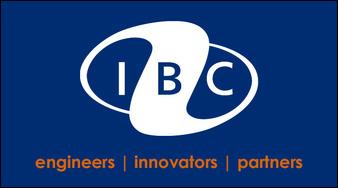




June 14, 2025
OnMonday,June9,concludingayearlong,first-of-its-kindprocess,PresidentSarahMangelsdorfannouncedthattheUniversityis investing$8.5millioninfournewtransdisciplinaryresearchcenters,markingasignificantcommitmenttofundingresearchthat addresseshumanity’smostcomplexchallenges
EstablishingnewtransdisciplinarycentersisalsoakeyindicatorofsuccessforBoundlessPossibility,theUniversity’s2030strategic plan CreatingcentersandinstitutesthatareuniquetoRochesterinareaswheretheUniversitycanconductconsequentialresearch ispartofacommitmenttoleveragingtheUniversity’sdistinctivestrengthstoreinvigorateitsresearchecosystem
“Iwanttothankallourfacultywhoparticipatedinthisprocessforsharingtheirideas,strengtheningourinstitutionalconnections,and shapingthefutureofresearchattheUniversity,”Mangelsdorfsaid “It’sclearthatthespiritofinnovationandcollaborationisaliveand wellatRochester.Eachprojectrepresentsideasandfrontiersthathavegreatpotentialanddeserveourattentionandsupport.”
Thefournewlyfundedcentersarepoisedtoexploreurgentandemergingquestionsthatdemandcollaborativeinquiryandbold thinking:
SoundSpace
Award:$4millionoverfiveyears
CombiningRochester’sstrengthsinmusic,engineering,andscience,Soundspacewillpushartisticandtechnicalboundarieswhile exploringtheintersectionofmusic,sound,andtechnology.Theteamwillfocusondevelopingabest-in-classhubforresearch, education,performance,andpublicengagement
Extended Reality Research and Application (EXTRRA)
Award:$2millionoverfiveyears
Focusingonextendedreality virtualreality,augmentedreality,andeverythinginbetween EXTRRAintegratesoptics,computing, neuroscience,andeducationtodevelopimmersiveplatformsthatimprovelearning,accessibility,andworkforcetraining.Itsvisionis toreshapehowindividualsengagewithdigitalandnaturalenvironments.
University of Rochester Resilience Research Center (UR³C) Award:$2millionoverfiveyears
ThefacultymembersbehindUR³Carestudyingthe“ordinarymagic”thatenablessomepeopletorecoverandthrivefollowing adversityfasterorbetterthanothers Theyaimtoidentifythesocioculturalfactorsandothermechanismsthatperpetuatestressrelatedhealthissues,enablingthedevelopmentofnovelinterventionsthatpreventorreversethoseconditions.
Center for Coherence and Quantum Science (CCQS) Award:$500,000overtwoyears
AgroupofUniversityscientistsandengineersaimtoadvancequantumtechnologiesthroughlight-matterinteraction.Bypooling theirskillsandresources,theyarepushingthefrontiersofquantumscienceandclassicalcoherencewhilealsoenablingpractical applicationwithinopticalscienceandopticalengineering

June 14, 2025
Thecreationofthesecenterscomesatapivotaltimeforresearchuniversities.Inashiftinglandscapeofpublictrustandfunding constraints,Rochesterisbettingon transdisciplinary research
Goingbeyondcross-disciplinaryscholarship,transdisciplinaryresearchrequiresfacultytoworkinawaythatbuildsoneachother’s ideastoreshapetheirrespectivefieldsorcreateanewonealtogether.
ToignitethekindofresearchthatwoulddrivediscoverywhilestrengtheningtheUniversity’sservicetohumanityandnational standing,theOfficeoftheProvost,incooperationwithOfficeoftheVicePresidentofResearch,createdamulti-phaseproposal process InApril2024,theprovost’sofficeissuedarequestforproposalstoreceiveone-yearplanninggrants,garneringan impressive42submissions Ananonymouscommitteeof10distinguishedscholarsfromacrosstheUniversity,SteveDewhurst,the vice president for research,andthen-provostDavidFiglio,chose10proposals.
Narrowingthefieldwassimplyamatterofresources Dewhurstexplainsthatifwetrytofundtoomanyideas“Noonewilleverget enoughmoneytodosomethingdistinctive,”addingthat“Ifwepicktoofew,we’replacingourbetstoonarrowly.”
Phasetwooftheprocesssoughtcomprehensiveproposals includingthosefromteamswhodidnotreceiveplanninggrants for fundingtoestablishanewtransdisciplinarycenterorinstitute All10planninggrantrecipientsandthreeadditionalteamssubmitted plansforcompetitivereview.Nearly60evaluationsfromexternalreviewers,alongwithinputfromafacultypanelanddeansledto theselectionofSoundspace,EXTRRA,UR³C,andCCQS.
ThetransdisciplinaryresearchinitiativeisthefirsttimetheUniversityhaseverusedinputfromexternalexpertstodeterminefunding forlarge-scaleinternalresearchandscholarshipacrosstheinstitution Inadditiontophase-twofeedback,fourexternalreviewers allmembersoftheNationalAcademiesandrepresentingdistinctscholarlydomains wereinvitedtositinonthefourawardees’ finalpresentationsonJune9,andtoprovidefeedbackoneachoftheproposals.
“Thisinitiativeisaboutbuildingourglobalreputationthroughtransdisciplinaryresearch,”saidNicoleSampson,theprovostofthe UniversityofRochester.“Byengagingexternalreviewers,wesoughttospreadthewordaboutthefantasticresearchandeducation happeningatRochestereverfurther.”
Thereviewers: Health/Climate
Jony Kipnis,AlanA.andEdithL.WolffDistinguishedProfessorofPathologyandImmunology
WashingtonUniversityinSt Louis
Natural Sciences
Richard Alley,EvanPughUniversityProfessorofGeosciences
PennStateUniversity

June 14, 2025
Social Sciences/Humanities
JohnAldrich’75(PhD), Pfizer-Pratt University Professor of Political Science
Duke University
Tech/Engineering
HowardStone, Neil A. Omenn ’68 University Professor of Mechanical and Aerospace Engineering
Princeton University
Aldrich expressed how glad he was to have played a part in the process. “I can’t overstate what a wonderful idea this is,” he said. “The courage and commitment of the leadership team to do something bold in research right now is inspiring.”
More information on this process can be found on the provost’swebsite. You can also learn about all 10 planning grant recipients on the Boundless Possibility blog, BetterThings.








Luke Auburn | Director of Communications, Hajim School of Engineering & Applied Sciences

The chip-scale laser has applications ranging from guiding autonomous vehicles to detecting gravitational waves.
ResearchersfromtheUniversityofRochesterandUniversityofCalifornia,SantaBarbara,engineeredalaserdevicesmallerthana pennythattheysaycouldpowereverythingfromtheLiDARsystemsusedinself-drivingvehiclestogravitationalwavedetection,one ofthemostdelicateexperimentsinexistencetoobserveandunderstandouruniverse
Laser-basedmeasurementtechniques,knownasopticalmetrology,canbeusedtostudythephysicalpropertiesofobjectsand materials Butcurrentopticalmetrologyrequiresbulkyandexpensiveequipmenttoachievedelicatelaser-wavecontrol,creatinga bottleneckfordeployingstreamlined,cost-effectivesystems.
Thenewchip-scalelaser,describedinapaperpublishedinLight:Science&Applications,canconductextremelyfastandaccurate measurementsbyverypreciselychangingitscoloracrossabroadspectrumoflightatveryfastrates about10quintilliontimesper second.Unliketraditionalsiliconphotonics,thelaserismadewithasyntheticmaterialcalledlithiumniobateandleveragesaphysical phenomenonknownasthePockelseffect,whichchangestherefractiveindexofamaterialwhenanelectricfieldispresent.

Luke Auburn | Director of Communications, Hajim School of Engineering & Applied Sciences


SHOW UR WORK: Researchers demonstrate how their laser could be used to drive a LiDAR system on a spinning disc and identify the letters U and R made out of LEGO blocks. (University of Rochester photo / J. Adam Fenster)
“There are several applications we are aiming for that can already benefit from our designs,” says Shixin Xue, a PhD student advised by Qiang Lin, the Dean’s Professor of electrical and computer engineering and optics, both of whom are among the paper’s authors. “The first is LiDAR, which is already used in autonomous vehicles, but a more advanced form known as frequency-modulated continuous-wave LiDAR requires a large tuning range and fast tuning of the laser’s frequency, and that’s what our laser can do.”
The researchers demonstrated how their laser could be used to drive a LiDAR system on a spinning disc and identify the letters U and R made out of LEGO blocks They say that the miniature demonstration could be scaled up to detect vehicles and obstacles at highway speeds and distances.
The researchers also demonstrated how the chip-scale laser could be used for Pound-Drever-Hall (PDH) laser frequency locking, a common technique used to narrow down, stabilize, and reduce a laser’s noise
“It’s a very important process that can be used for optical clocks that can measure time with extreme precision, but you need a lot of equipment to do that,” says Xue, noting that a typical setup might require instruments the size of a desktop computer such as an intrinsic laser, an isolator, an acoustic optic modulator, and a phase modulator. “Our laser can integrate all of these things into a very small chip that can be tuned electrically.”
The research was supported in part by the Defense Advanced Research Projects Agency (DARPA) Lasers for Universal Microscale Optical Systems (LUMOS) and the National Science Foundation.
Mollie Radzinski
| June 5, 2025

he international team led by RIT researchers makes an unprecedented amount of information available for future discovery by

COSMOS-WebwasthelargestGeneralObserverprogramselectedbytheJamesWebbSpaceTelescopeforCycle1. Theteam,ledbyRITAssociateProfessorJeyhanKartaltepe,haspubliclyreleaseditsfulldataset,includingacatalogandan interactiveviewer
Thereleasegivesthelargestlookatthedeepuniverseever,providingdataforscientiststomakefuturediscoveries.Already, scientistshavefoundatreasuretroveofearlygalaxies.
COSMOS-Webprovidesthelargestviewdeepintotheuniverseever,andnowaneasilysearchablecatalogwithallofthedatais availabletothepublic.
COSMOS-WebwasthelargestGeneralObserverprogramselectedforCycle1oftheJamesWebbSpaceTelescope(JWST) The surveymapped0.54squaredegreesofthesky(abouttheareaofthreefullmoons)withtheNearInfraredCamera(NIRCam)anda 0.2squaredegreeareawiththeMidInfraredInstrument(MIRI).Whileprevioussurveyshaveaimedtohelpastronomersmapand understandwhatexistsinthevastuniverse,theadvancedinstrumentsofJWSThaveallowedCOSMOS-Webtostudygalaxy evolutionthroughalongrangeofhistory
“ThesensitivityofJWSTletsusseemuchfainterandmoredistantgalaxiesthaneverbefore,sowe’reabletofindgalaxiesinthevery earlyuniverseandstudytheirpropertiesindetail,”saidJeyhanKartaltepe,associateprofessoratRochesterInstituteofTechnology andleadresearcherofCOSMOS-Web.“Thequalityofthedatastillblowsusaway.Itissomuchbetterthanexpected.”
COSMOS2025,thecatalogcontainingthephotometry,morphology,redshifts,andphysicalparametersofgalaxiesfromCOSMOSWeb,deliversacombinationofsensitivity,spatialresolution,andfield-of-viewtoobservenearly800,000galaxies UsingJWST imaging,ground-basedtelescopedata,andpreviousCOSMOSdata,thecatalogmakesanunprecedentedamountofinformation freelyavailable,openingmanyunexploredscientificavenues
Mollie Radzinski
| June 5, 2025

he international team led by RIT researchers makes an unprecedented amount of information available for future discovery by
“Thiswasanambitiousundertakingthatrequiredthe developmentofinnovativetechnologiestosimultaneously measurethephotometryandmorphologyofnearly800,000 galaxiesacross37images,”saidMarkoShuntov,postdoctoral researcheratCosmicDAWNCenter “Buildingthecatalog requiredtremendousteamwork,anditwasallworthitbecause ultimatelyithasdeliveredsomeofthehighestqualityredshifts andphysicalparametersofgalaxiesthatwillenable groundbreakingscience.”
TherawdataretrievedduringCOSMOS-Webwassovastthat itwasdifficultandincrediblytime-consumingforscientiststo workthroughit.Thepublicavailabilityofthecatalogtakesthat workoutoftheequationforthecommunity.
TheCOSMOS-Webteamworkedtoreducethedata, eliminatingartifacts,subtractingbackgrounds,andimproving theastrometryinordertoprovideaccuratephotometricand morphologicalanalyses

ThebreakthroughsalreadydiscoveredthroughJWST’sobservationshaveshownhowessentialNIRCamdataisforunderstanding galaxiesintheearlyuniverse Ensuringthatthedataarescience-readyisanachievementthatmakesCOSMOS-Webthestandard calibrationforfuture,largesurveys.
“Wecombinedmorethan10,000imagesoftheskytogethertoformthelargestcontiguousimageavailablefromJWST,”explained MaximilienFranco,postdoctoralresearcheratUniversitéParis-Saclay.“Todothis,weneededtoensurethatalltheimageswere properlyalignedwithexistingdata,andalsotocorrectforanyobservationalbiases.Itwasincredibletorevealgalaxiesthatwere previouslyinvisible,andverygratifyingtofinallyseethemappearonourcomputers”
Likewise,MIRIplaysacriticalroleindeterminingthemassofearlygalaxiesandinvestigatingstarformationovercosmictime.Ithas alreadybeeninstrumentalinconfirmingsomeofthemostdistantgalaxiesdiscoveredbyJWST.Usinglongerwavelengthsthatare lessaffectedbydustextinction,MIRIhastheabilitytodetectandcharacterizegalaxiesathigherredshifts,oratearliertimesinthe universe.
“WithMIRI,we’renowaccessinganunprecedentedlevelofdetailinthiswavelengthrange,providingnewinsightsintotheprocesses drivinggalaxyevolutionandthegrowthofblackholes,”saidSantoshHarish,postdoctoralresearchassociateatRIT “Theleapin sensitivityandspatialresolutionisextraordinary,andMIRIobservationsfromCOSMOS-Webareafineexampleofwhatthis instrumentiscapableof.”
COSMOS-Web opens window
he international team led by RIT researchers makes an unprecedented amount of information available for future discovery by
Mollie Radzinski
| June 5, 2025

Alongwiththedataitselfandthreeinitialpapersonthecatalog,nearinfraredimaging,andmidinfraredimaging,thedatareleasealso includesaninteractiveviewerwhereuserscandirectlysearchimagesforspecificobjectsorclickonobjectstoseetheirproperties. Inaddition,twonewCOSMOS-Webstudies oneexaminingthestructuralevolutionofbrightestgroupgalaxiesoverthepast11 billionyearsandanotherapplyingartificialintelligencetoestimatekeygalaxypropertiesfromphotometry highlightthewidescientific potentialofthecatalog.
“ThankstoJWSTandtheCOSMOS-Websurvey,wecannowtracehowgalaxiesshutdownstarformation,undergomorphological transformation,andhowtheseprocessesareshapedbytheirenvironmentacrosscosmictime,evenpredictinggalaxyproperties usingAI-drivenmethods,”saidGhassemGozaliasl,astrophysicistandresearcheratAaltoUniversity.
WhentheJWSTlaunchedin2021,theCOSMOS-Webteamofnearly50researchersaroundtheworldhadthelongestobserving timeduringthetelescope’sfirstyear.Theteamsetoutwiththreeprimarygoals:tomapandbuildunderstandingoftheReionization Era(intheuniverse’sfirstbillionyears);totraceandidentifymassivegalaxyevolutioninthefirsttwobillionyears;andtostudyhow darkmatterislinkedtovisiblematterwithingalaxies
Aftermorethan150visitsand250hoursofobservations,theJWSTdatafromCOSMOS-Webhasprovidedtheinformationtoobtain thosegoals Thesurveyhassentscientistsintoanewageofspaceobservationanddataanalysis,andhasopenedthedoortoa futureofunderstandinganddiscoverylikeneverbefore
“Wehavedataandcatalogsthatwe’reverysureof,thatwe’vetestedandputalotofworkinto,”saidKartaltepe.“Ican’toverstate howmuchthefieldhaschanged WithdatafromJWST,wenowhaveanewwindowontheuniverse”
COSMOS-WebisjointlyledbyKartaltepeandCaitlinCasey,professorofphysicsatUniversityofCalifornia,SantaBarbara,andis partofTheCosmicEvolutionSurvey(COSMOS) Beginningin2007,COSMOSjoinedtogethermorethan200scientistsacrossthe globetostudytheformationandevolutionofgalaxiesusingbothspace-basedandground-basedtelescopes Theremarkable longevityofthecollaborationisatestamenttotheimportanceofopen,accessiblescience.
The COSMOS-Web team is made up of nearly 50 researchers from around the world The group gathered for a conference ahead of their full data release in Marseille, France, in May Credit: COSMOS-Web

CTIBench evaluates large language models used in Cyber Threat Intelligence applications by
Scott Bureau | June 10, 2025

RochesterInstituteof Technologyexpertshavecreatedanewtool that testsartificialintelligence(AI)toseehowmuchit reallyknows about cybersecurity AndtheAI willbegraded
Thetool, calledCTIBench, isasuiteof benchmarkingtasksand datasetsusedtoassesslargelanguagemodels(LLMs)inCyber Threat Intelligence(CTI). CTI isacrucialsecurityprocessthat enablessecurityteamstoproactivelydefendagainst evolvingcyber threats
Theevaluationtoolcomesat atimewhenAI assistantsclaimto havesecurityknowledgeandcompaniesaredeveloping cybersecurity-specificLLMs. Forexample, Microsoft Copilot hasan integratedsecurityplatform.
Untilnow, therehasbeennowaytotellif anLLMhasthecapability toworkasasecurityassistant

“IstheLLMreliableandtrustworthy?”askedNidhiRastogi, assistant professorinRIT’s Department of SoftwareEngineering. “CanI askit aquestionandexpect agoodanswer?Willit hallucinate?”
CTIBenchisthefirst andmost comprehensivebenchmarkintheCyberThreat Intelligencespace Thetoolis alreadybeingusedbyGoogle, Cisco, andTrendMicro
“WeshouldembraceusingAI, but thereshouldalwaysbeahumanintheloop,”saidRastogi “That’swhywe arecreatingbenchmarks toseewhat thesemodelsaregoodat andwhat theircapabilitiesare. We’renot blindlyfollowingAI but smartlyintegratingit intoourlives”.”
InherAI4SecResearchLab, Rastogiisstudyingat thecrossroadsof cybersecurityandAI Shedeveloped CTIBenchalongwith computingandinformationsciencesPhD studentsMdTanvirulAlam, Dipkamal Bhusal, andLeNguyen
TheRIT teambeganbyworkingon SECURE, abenchmarkfocusedonevaluatingLLMsinthecontext of industrialcontrolsystems. A paperonSECURE waslateracceptedtothe2024AnnualComputerSecurity ApplicationsConference.
“That experiencemadeusrealizehowcriticalit istoevaluateLLMsinotherhigh-stakesdomains,”said Bhusal “SincetherewasnoreliablebenchmarkforCTI, wefelt it wastheright timetobuildone”

CTIBenchislikeatest onhowmuchaLLMknows Throughout thefivedifferent benchmarks, theAI completestasksasif it isasecurityanalyst at asecurity operationscenter Tasksincluderoot causemappingandcalculatingCommonVulnerabilityScoringSystemscores
TheRIT teamalsocreated2,000cybersecurityquestionsusingChatGPT withalot of trialanderrorinprompt engineeringthequestions Allthequestionswere validatedbyrealsecurityprofessionalsandcybersecuritygraduatestudents Questionsintheevaluationrangefrombasicsecurityspecialist definitionsto technicalNIST specificationstodeterminingthenext stepsof athreat situation
CTIBench evaluates large language models used in Cyber Threat Intelligence applications
by Scott Bureau | June 10,
2025

“Oneof themost challengingandrewardingaspectswasdesigning appropriatetaskstoquantitativelyevaluatethecapabilitiesof LLMsinthe domainof CyberThreat Intelligence,”saidAlam.
WhilecreatingCTIBenchoverseveralmonths, theRIT teamranthetool throughfivedifferent LLMs Intheend, thebenchmarkprovidesan evaluationof theLLMit istesting showingitspercentageof accuracyon thedifferent tasks
Theresearcherspublished“CTIBench: A BenchmarkforEvaluatingLLMs inCyberThreat Intelligence”at NeurIPS 2024, theConferenceonNeural InformationProcessingSystems It wasaspotlight paperamongthetop2 percent acceptedat NeurIPS
Now, industryhastakennoticeof CTIBench It isfreeandopenaccess availableonthe HuggingFaceAPI andGitHub
GoogleisusingCTIBenchtoevaluateitsnewexperimentalcybersecurity modelSec-Geminiv1. CiscoandTrendMicro areusingCTIBenchto evaluatecybersecurityapplicationsintheirownLLMs ChrisMadden, a distinguishedtechnicalsecurityengineerat YahooSecurity, hasalso brought attentiontoCTIBench inhisCommonWeaknessEnumeration benchmarkeffort incollaborationwiththeMITRE Corporation
“Thequickadoptionof CTIBenchvalidatesourresearchimpact and positionsuswellincybersecurityandLLMresearch,”saidRastogi. “Thisis openingdoorstonewcollaborations, funding, andreal-worldindustry impact ”

A graph fromthe paperillustratesthe numberof overestimationsand underestimationsmade bydifferent LLMswhen predicting the severityscore of securityflawsin information systems All modelsexhibit a higherfrequency of overestimation compared to underestimation, which suggeststhat LLMs mayneed calibration to improve theiraccuracyin threat severityprediction
Golisano Institute for Sustainability partners with Nike, Goodwill, Ambercycle to recycle clothing by Nathaniel Smith | June 18, 2025


RIT-GISresearchengineersdevelopautomatedsystemtodismantleusedclothingforhigh-qualitytextilerecycling. AIandlasertechnologyidentifyandremovenon-recyclableelementslikezippers,logos,andmixedmaterials.
Theprototype,inspiredbycollaborationswithNike,Goodwill,andAmbercycle,aimstoreducelandfillwasteandsupporta circulareconomyforthefashionindustry
AresearchteamatRIT’sGolisanoInstituteforSustainability(GIS)isdevelopingafullyautomatedsystemtoidentify,sort,and disassemblegarmentsathighspeedandinhighvolume,fortextilerecyclingineffortstoaddressacriticalglobalwasteproblem.
IntheUnitedStatesalone,morethan11milliontonsoftextilesendupinlandfillseachyear Muchofthatwasteincludesgarments thataretoocomplextorecycleefficientlyduetomixedmaterials,embeddedcomponentslikezippersandbuttons,screen-printed designs,andotherlabelinconsistenciesingarmentcomposition.
LedbyprogrammanagerMarkWalluk,theteam,consistingofstaffengineersRyanParsons’17(mechanicalengineering),Nick Spears’24(roboticsandmanufacturingengineeringtechnology),SriPriyaDas,RonaldHolding.andChristopherPiggot’91 (computerengineeringandtechnology),aswellasassociateresearchprofessorAbuIslam,isusinganautomatedsystemtodetect andremovethesenon-recyclableelementstoenablehigher-valuematerialrecovery

Staff engineer Sri Priya Das, right, reviews AI-generated data showing what secondhand clothing is made of Das helped lead the AI algorithm development for RIT’s automated textile disassembly system, shown here with colleague and engineer Nick Spears who implemented the algorithms in the system software | Carlos Ortiz/RIT
Golisano Institute for Sustainability partners with Nike, Goodwill, Ambercycle to recycle clothing by
Nathaniel Smith
| June 18, 2025

Theprocessbeginswithaconveyor-fedimagingstationwherethreespecializedcamerasgenerateahigh-resolution,multidimensionalmapofthegarmentwhichallowsforfibercompositionanalysisdowntothemillimeterlevel
Thesystemthenleveragesartificialintelligenceandmachinevisiontoidentifyandremovenon-recyclableelementsfromclothing, whichprovedtobeauniquechallengefortheteam
“Intraditionalmanufacturing,theseautomationshavebeenusedfordecadesandit’spredictable,”saidIslam,whocollaboratedwith DasontheAIintegration “Youknowwhatpartiscomingnextandexactlywhereitgoes Inusedclothing,everyitemisdifferent That unpredictabilitymeansthesystemmustmakeon-the-spotdecisions”
Tomeetthatchallenge,IslamandDasdevelopedvision-guidedalgorithmsthatidentifyfeatureslikelogos,collars,andcuffs,and interpretinfraredreflectionsfordefinitionoffibertype Thatdataisthenpassedtoaroboticlaser-cuttingsystemthatcutsthose featureswithprecisionandspeed,withoutdamagingreusablematerial.Oncecut,thegarmentadvancestoaroboticsortinggantry, whichplacesthecleanmaterialintoseparatebinsforrecycling.Theprototypecanprocessanewgarmentroughlyevery10seconds.
Walluknotedthatthesystemwasbuiltwithscalabilityandreal-worldcomplexityinmind,soitisbotheconomicalandreadyto replicate.
“It’snotgoingtosolvetheworld’stextilewasteproblem,butit’sasteptowardamorecirculareconomy,”Walluksaid “Today, recyclerspreferpost-industrialfabricsbecauseoftheirpredictablematerialproperties.We’reworkingtoadvancebeyondthatstepby transformingpost-consumerclothingintohigh-quality,reliablefeedstockalso.Thismakesthesematerialsnotonlyviable,but preferable,helpingdivertthemfromlandfills”
KeycollaboratorsincludeAmbercycle,aLosAngeles-basedcompany pioneeringpolyesterrecycling,andGoodwilloftheFingerLakes,which providedgarmentsfortestingandinsightsintotheresaleandreuse market.Nikecontributedindustryguidanceintheproject’searlystages.
Thework,whichbegunin2023,wasfundedthroughagrantofnearly$13 millionfromtheREMADEInstitute,apublic-privatepartnershipfocusedon developingcircularmanufacturingsolutions.Theteampresenteditswork ataglobalREMADEconferencethispastAprilinWashington,D.C.
“Textilerecyclingisacriticalglobalchallenge,andwe’reproudto collaboratewithindustryleaderstodrivemeaningfulsolutions,”saidNabil Nasr,DirectorofGISandCEOoftheREMADEInstitute “Thiseffortnot onlycreatessignificantenvironmentalimpactbutalsorepresentsamajor areaofgrowthandinnovationforusatGIS.”
Thoughstillinthepilotphase,thetechnologyisalreadyattractinginterest globallyfromrecyclersintheU.S.,Europe,SouthAsia,andLatinAmerica. Theteamanticipatestransitioningthesystemtoitspartnersforcontinued testingandpotentialdeploymentlaterthisyear

Luke Auburn | Director of Communications, Hajim School of Engineering & Applied Sciences

NETWORK IT: A photonic chip coupled to a highly nonlinear crystal and a fiber array unit. The crystal produces entangled visible-telecom photon pairs, which are processed on silicon nitride and silicon photonic integrated circuits enabling a compact and versatile platform to link visibly accessed quantum nodes over existing telecommunications infrastructure. (Photo courtesy of RIT)
TheRochesterQuantumNetworkusessinglephotonstotransmit informationoverdualfiber-optictelecommunicationslines.
Researchers at the University of Rochester and Rochester Institute of Technology recently connected their campuses with an experimental quantum communications network using two optical fibers. In a new paper published in Optica Quantum, scientists describe the Rochester Quantum Network (RoQNET), which uses single photons to transmit information about 11 miles along fiber-optic lines at room temperature using optical wavelengths.
Quantum communications networks have the potential to massively improve the security with which information is transmitted, making messages impossible to clone or intercept without detection. Quantum communication works with quantum bits, or qubits, that can be physically created using atoms, superconductors, and even in defects in materials like diamond. However, photons individual particles of light are the best type of qubit for long distance quantum communications.
Photons are appealing for quantum communication in part because they could theoretically be transmitted over existing fiber-optic telecommunications lines that already crisscross the globe. In the future, many types of qubits will likely be utilized because qubit sources, like quantum dots or trapped ions, each have their own advantages for specific applications in quantum computing or different types of quantum sensing.
Luke Auburn | Director of Communications, Hajim School of Engineering & Applied Sciences
However, photons are the most compatible with existing communications lines. The new paper is focused making quantum communication between different types of qubits in a network a reality
“This is an exciting step creating quantum networks that would protect communications and empower new approaches to distributed computing and imaging,” says Nickolas Vamivakas, the Marie C. Wilson and Joseph C Wilson Professor of Optical Physics, who led the University of Rochester’s efforts “While other groups have developed experimental quantum networks, RoQNET is unique in its use of integrated quantum photonic chips for quantum light generation and solid-state based quantum memory nodes ”
The teams at the University of Rochester and RIT combined their expertise in optics, quantum information, and photonics to develop technology with photonic-integrated circuits that could facilitate the quantum network Currently, efforts to leverage fiber-optic lines for quantum communication require bulky and expensive superconducting-nanowire-single-photon-detectors (SNSPDs), but they hope to eliminate this barrier.
“Photons move at the speed of light and their wide range of wavelengths enable communication with different types of qubits,” says Stefan Preble, professor in the Kate Gleason College of Engineering at RIT. “Our focus is on distributed quantum entanglement, and RoQNET is a test bed for doing that.”
Ultimately, the researchers want to connect RoQNET to other research facilities across New York State at Brookhaven National Lab, Stony Brook University, Air Force Research Laboratory, and New York University.
The research was supported by Air Force Research Laboratory.

























July 2025 RES Magazine Newsletter
Announcing: IEEE Young Professionals Meet and Eat Event
Our Young Professionals Meet and Eat event will take place on Saturday, September 13, 2025, at the Cavalry House Lodge in Mendon Ponds Park. Look for the registration link in the August Newsletter or a general email to all Young Professional members.
Our IEEE Rochester Section Summer Picnic will be held on Saturday, August 16, 2025, at the Mendon Ponds Park Devil’s Bathtub Shelter. I hope you can join us for our Dinosaur Barbeque catered picnic! For more information and to sign up, please use the following link: https://events vtools ieee org/m/484797
On Thursday, May 22, 2025, Princeton University’s Electrical and Computer Engineering (ECE) department hosted an IEEE Milestone Ceremony. ECE Professor Emeritus Ruby Lee, Dr. Harold Stone of NEC Research Labs, and Dr. James Wynn of IBM have led this commemoration effort. The ceremony honored the invention and implementation of the Fast Fourier Transform (FFT) by inventors Dr John Tukey, a Princeton professor, and J.W Cooley of IBM The FFT was a key advance in signal and information processing, allowing the rapid conversion of a digitized waveform from the time domain to the frequency domain. Several Rochester Section members, Ram Dhurjaty, a Region 1-2 Historian, and Howard Bussey, a longtime contributor to the Rochester Section, attended the event.



American Consulting Engineering, Companies of New York

American Public Works Association Monroe County/Genesee Valley Branch

American Society of Civil Engineers, Rochester Section

American Society of Heating, Refrigerating, and Air-Conditioning Engineers, Rochester Chapter

American Society of Mechanical Engineers, Rochester Section

American Society of Plumbing Engineers, Rochester NY Chapter

Electrical Association

Genesee Valley Land Surveyors Association

Illuminating Engineering Society of North America Inc., Rochester Section

Imaging Science & Technology, Rochester Chapter

Institute of Electrical and Electronics Engineers, Rochester Section

Institute of Industrial and Systems Engineers, Rochester Chapter

Monroe Professional Engineers Society

New York State Association of Transportation Engineers, Section 4

Rochester Plant Engineers

Association for Bridge Construction and Design

Society of Plastics Engineers, Rochester Section

Terra Rochester Finger Lakes Science & Engineering Fair

